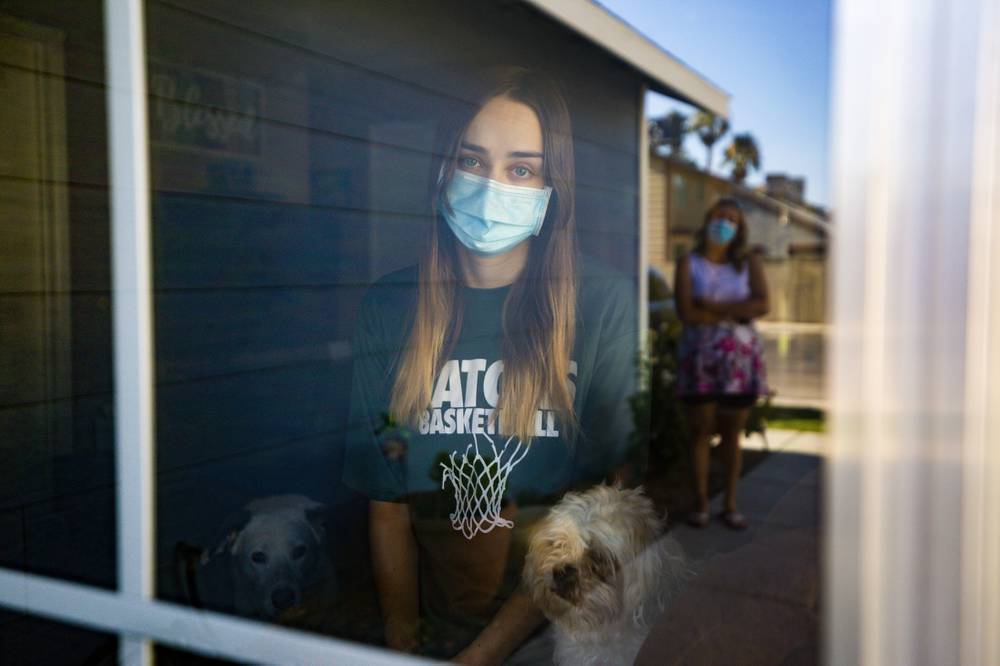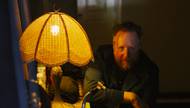It started out innocently enough for Kaydriana Asher.
Surviving COVID-19
- Las Vegans describe their bodies’ grueling battles with COVID-19
- COVID-19 survivor Laurence Derasmo, elementary school principal
- COVID-19 survivor Marie*, emergency room tech
- COVID-19 survivor John Gist, concert promoter
- COVID-19 survivors Darryl Lancaster, teacher, and Shelly Donald, investigator
- COVID-19 survivor Joe Brailsford, musician
- COVID-19 survivor Kaydriana Asher, high school student
- COVID-19 survivor Brian Friedman, photographer
In June, the 16-year-old Green Valley High School student noticed she had a slight runny nose, a symptom she attributed to allergies and being out in the heat. Today, she’s recovering from COVID-19, hopeful that by sharing her story, she’ll encourage more people—especially fellow teens—to take the deadly virus more seriously.
The day after Asher developed the runny nose, she woke up and her sniffles were gone. But later in the day, she began to be bothered by a “very, very sore throat.” That night, Asher’s symptoms grew worse and she went to bed. The next day, she woke up with a sore throat, muscle aches throughout her body and chills.
Still, Asher wasn’t all that worried. She’d been cautious, mostly staying home since mid-March and wearing a mask when she went out. As her mother, Sandra, puts it, “She’s very responsible.”
Back home and awaiting test results, Asher self-quarantined. At breakfast, she noticed the milk was past its expiration date. When she smelled to check, she couldn’t smell anything. She tried to smell some Tabasco sauce, with the same result.
A day later, after a restless night of sleep, Asher woke up feeling even worse. She was laboring hard to breath, and her chest felt very tight. Her mom rushed home from work, and the two headed to St. Rose Dominican Hospitals’ Siena campus. There, doctors ordered a chest X-ray, which didn’t show severe inflammation, and her lungs didn’t sound congested. Hospital staff suggested she had anxiety.
But she sensed it was worse, even though children ages 10-19 have accounted for just 7% of Nevada’s infections. “I couldn’t breathe, so it did freak me out,” she said. “I knew what it felt like to be out of breath, but this was getting up to go to the bathroom for two minutes and being winded for 45.”
Staff gave Asher a sedative, along with a nasal swab coronavirus test as a precaution. She was preparing to return home when the doctor returned with the news: She’d tested positive.
“A part of me felt very embarrassed to have gotten COVID,” she said. “At first, I was like, ‘I’ve been wearing my mask. This makes me look irresponsible.’”
Asher spent about 10 hours in the emergency room before she was sent home with steroids and an inhaler. The breathing treatments provided immediate relief but didn’t last long. Three days later, she said, her head felt like “a hot air balloon about to pop,” and her chest felt like it was being crushed by weights.
“She called me crying saying, ‘I don’t think I can breathe right. I know I’m breathing … but I don’t feel like I can get the air out,’” Sandra said.
They immediately returned to the hospital.
After running a series of tests, hospital staff escalated Asher’s case as being “in the red zone” and admitted her to the pediatric intensive care unit.
From there, Asher said, her pain fluctuated from a steady ache to excruciating. The only time she wasn’t hurting was when she was asleep. Her mother was there with her, but the two weren’t permitted to embrace. “It felt like I was just literally alone,” Asher said.
She received doses of steroids and potassium through an intravenous tube, but fortunately, never needed to be intubated. Asher left the hospital on June 29, and doctors expect it will take four to six weeks until she’s fully recovered.
Two days later, she said, she was breathing easier but was still weak, and only sleeping in three-hour spurts. “They’re telling me that’s normal,” Asher said.
Meanwhile, Asher isn’t sitting idle. She has discussed her struggles on Twitter, posting photos of her struggling to breathe and in the ICU with tubes coming out of her stomach. It’s a dramatic sight, but one she hopes can help others avoid a similar fate.
One responder on Twitter, @lvadriana1, tweeted, “Thank you for posting this. You are such a brave young girl. Hopefully more people read your story and take this COVID virus seriously.”
Though adults account for most of the known COVID-19 cases worldwide, Asher is proof no one at any age is completely safe. “I feel like I’m educating others but getting educated myself,” she said. “That’s all I could really ask for, because I could be doing better, too. Everyone can probably be doing better.”
• To help Kaydriana Asher and her family with their medical bills, visit gofundme.com/kaydee-a.





